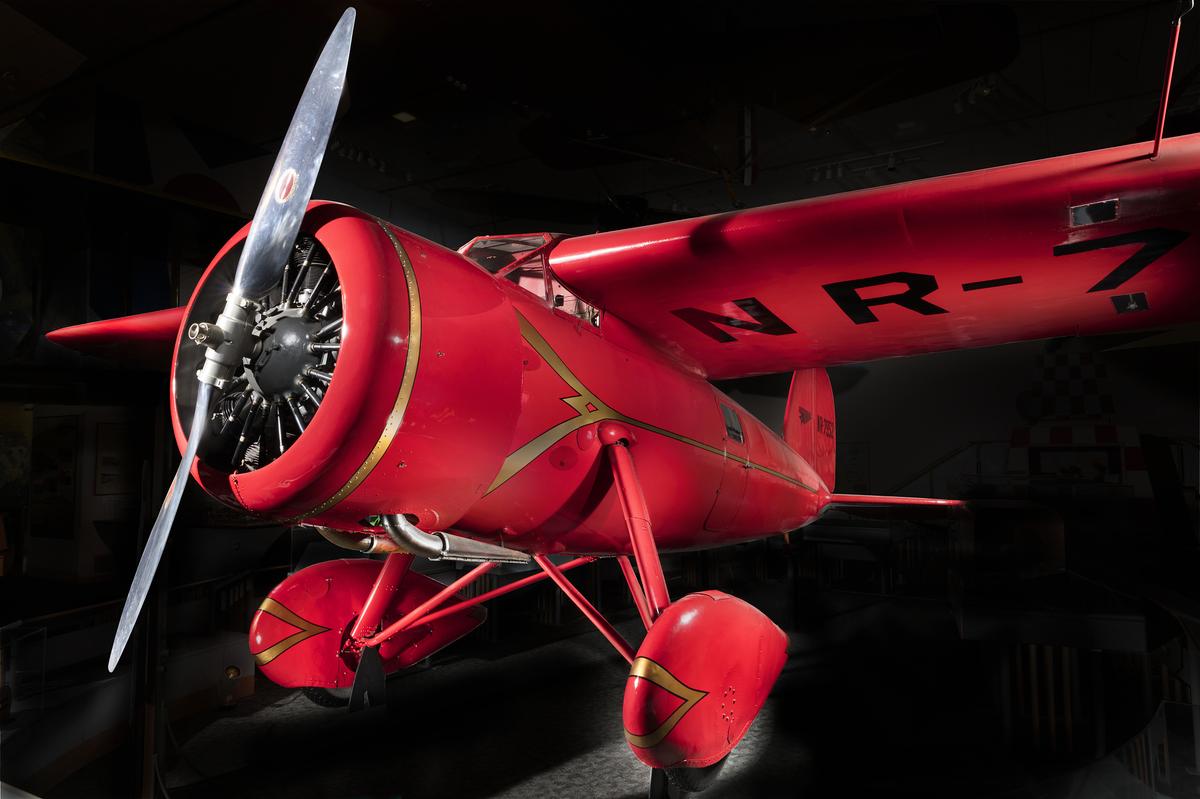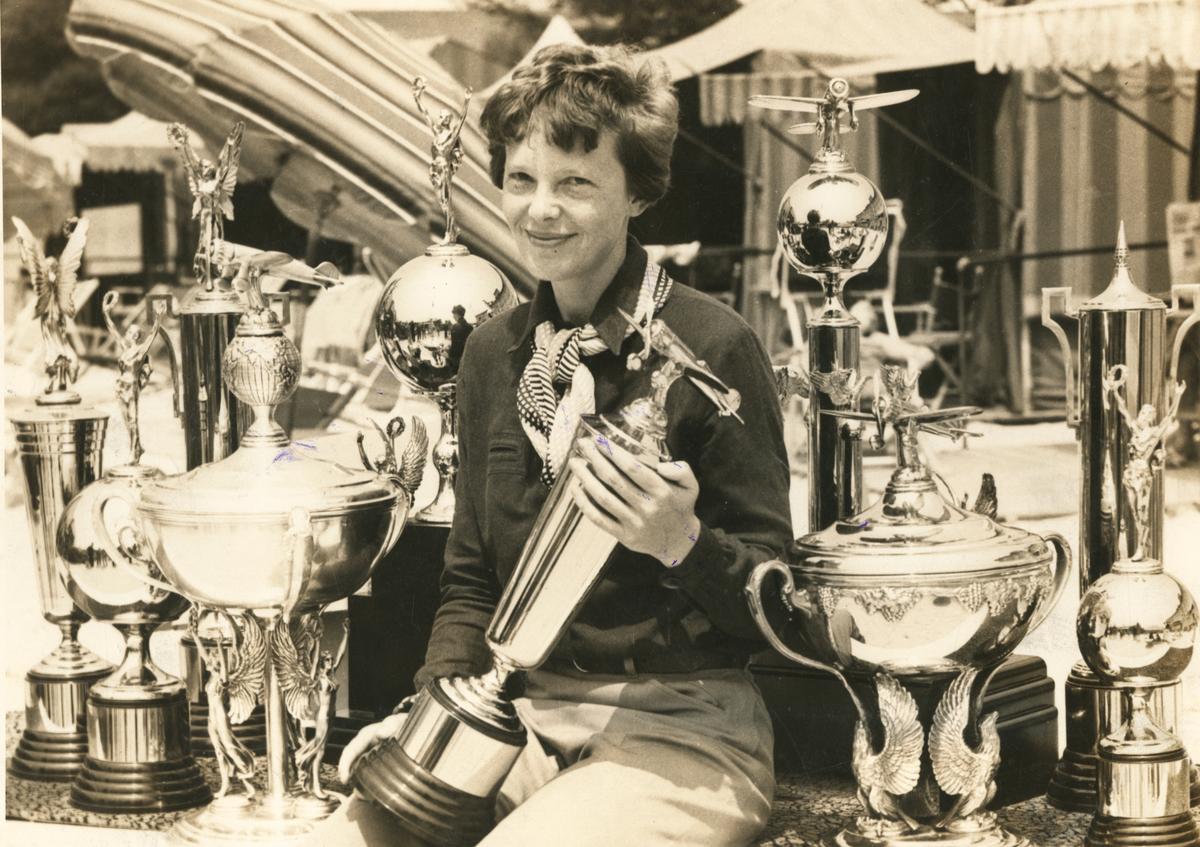The aviation industry, as is the case with many other industries, is one that has been historically dominated by men. The challenge of under-representation of women in pilot positions is real and one that the global aviation industry is grappling with as it attempts to address it.
Even when compared with other fields of science, technology, engineering, and mathematics, the estimates of the percentages of the world’s airline pilots who are female are pitifully low. According to estimates from 2023, these numbers could be anywhere in the range of 4-6% in the world, meaning only one out of every 20 pilots is currently a woman. India does reasonably better and is in fact one of the countries with the highest percentage of women pilots, with nearly one in every 12 Indian pilots being a woman.
Given the current scenario – a little over a century since the aviation industry in its current avatar was born – you can imagine how difficult it might have been for women in the early decades of aviation. American aviation pioneer Amelia Earhart, however, grabbed the spotlights by the ears and showed one and all that women were here to fly. The trailblazer turned legendary aviator pursued a life of freedom and flight, ticking off more flying records than can be counted in our fingers.
Even by her own lofty standards, the year 1932 was rather special for Earhart. For it was in that year that Earhart set two of her many aviation records – two that sets her apart. Both these flights were achieved in the bright red Lockheed 5B Vega.
The first of those came in May 20-21 when Earhart became the first female and only the second person since compatriot and fellow aviation pioneer Charles Lindbergh to fly solo, non-stop across the Atlantic Ocean. Having taken off from Newfoundland, Canada, Earhart flew over 2,000 miles in 15 hours before landing in a field near Londonderry, Northern Ireland.
Amelia Earhart pictured in the cockpit of her “flying laboratory” when it was nearing completion at Burbank, California in 1936.
| Photo Credit:
The Hindu Archives
Flight across the U.S.
The flight made her an instant celebrity worldwide as she showed that a woman could not only be an able pilot, but also be courageous enough to pull off something that only one person had achieved before her. Not one to rest on her laurels, Earhart already had plans for her next flight – she was going to try fly solo, non-stop across the U.S.
Less than a month since her historic Atlantic crossing, Earhart was up and about again. On July 13, Earhart attempted to cross the U.S. non-stop. A faulty gasoline pump, however, forced her to make one step. The stop might have put a stop to her goal, but she did set a new women’s record for crossing the country. By flying across in 19 hours, 15 minutes, and 35 seconds, she bettered the previous record held by Ruth Nichols by over 10 hours!
Before long, she was at it again. On August 24, she set off from Los Angeles in the afternoon, to achieve what she had just missed in July. She flew across the country without stopping once, covering the 2,477 miles in 19 hours, 5 minutes at an average speed of 128 miles/hour.
Earhart not only became the first woman to fly solo, non-stop across the U.S., but also shaved off 10 minutes from her record-breaking time from July. She was, however, unable to break the men’s record that was held by Frank Hawks, who had managed the feat in 17 hours, 39 minutes, and 59 seconds. That would have to wait until later, as Earhart did fly across the U.S. solo again, achieving it in just 17 hours and 7 minutes, and thereby breaking Hawks’ record by 32 minutes.
Cruising at an altitude of about 10,000 feet, Earhart was spotted from the ground on only two occasions during her 19-hour flight. When she landed at Newark Airport on August 25, however, there were nearly 150 people gathered to welcome her. What the crowd lacked in numbers, they more than made up for it with their enthusiasm as they rushed onto the field and surrounded the plane.
Quenches her thirst
Earhart, on her part, pushed through the throng of gathered people immediately after she landed, to place a call to her husband, American husband George Putnam, to inform of her safe arrival as he had been held up in New York. Her first comment to the press was to ask for water as the water she had carried on board had become too hot to be drunk. Throughout her journey, Earhart only had tomato juice, with the cocoa and sandwich she had packed also remaining untouched.
“It was a beautiful trip. If I had the weather I had on my first attempt, I would have broken the record,” Earhart told reporters, when asked about the flight. When pressed about her future plans, she said “I’m going to my home in Rye, and rest.” Once rested, she got back to flying again, something she kept at until her disappearance in 1937 when attempting a circumnavigation of the world, and she was declared dead in 1939.

Amelia Earhart’s Lockheed Vega 5B at the Smithsonian Institution National Air and Space Museum.
| Photo Credit:
Eric Long / Smithsonian’s National Air and Space Museum
The Little Red Bus
Earhart bought the bright red Lockheed 5B Vega with which she flew solo, non-stop both across the Atlantic Ocean and the U.S. in 1930. She called it her “Little Red Bus.”
Vega, which was introduced in 1927, was the first product of designer Jack Northrop and Allan Loughead’s (Allan legally changed his last name to Allan Lockheed in 1934) Lockheed Aircraft Company. Its attributes of being both sturdy and roomy, streamlined and fast, made it the go-to choice for pilots seeking distance and speed records.
Having purchased her Little Red Bus, Earhart had a nose-over accident with it the same year. The fuselage was replaced and strengthened to carry extra fuel tanks. While at it, other modifications were also made to the plane, including adding three types of compasses, a drift indicator, and installing a more powerful engine.
Following her successes in 1932, Earhart sold her Little Red Bus to Philadelphia’s Franklin Institute in 1933, having herself bought a new Lockheed 5C Vega. In 1966, the Little Red Bus was acquired by the Smithsonian.

Earhart, seen here with the trophies from which she made her selection to present to winners at the 1936 National Air Races, had plenty of records to her name.
| Photo Credit:
The Hindu Archives
Earhart’s trophy case
While it might be nigh impossible to list all of Earhart’s accomplishments as an aviator, here is a list of firsts/records that she managed during her flying career:
1928: First woman to fly across the Atlantic as a passenger
1931: First woman to fly an autogiro and autogiro altitude record
1932: Second person and first woman to fly solo, non-stop across the Atlantic
1932: First woman to fly solo, non-stop across the U.S.
1935: First person to fly solo, non-stop from Hawaii to the U.S. mainland.


